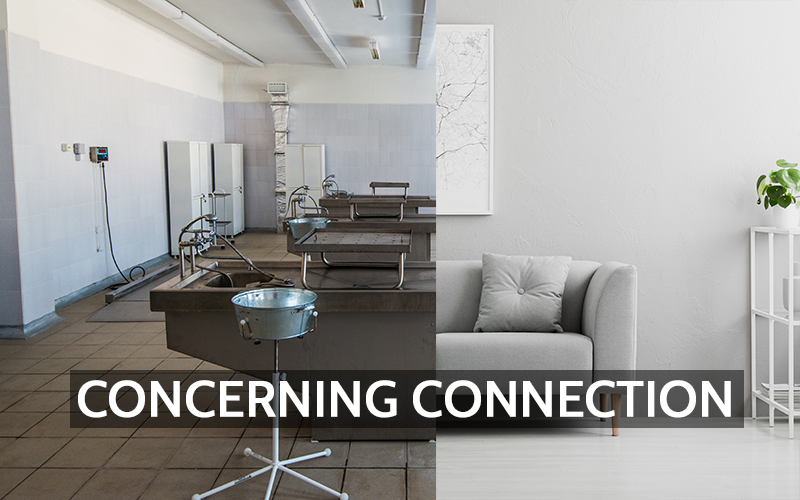When purchasing new furniture, most people focus on aesthetics, comfort, and price. However, a less visible concern lurks beneath the sleek veneer of many furniture pieces: formaldehyde off-gassing. This phenomenon, stemming from the use of certain chemicals in furniture manufacturing, can significantly affect indoor air quality and health. Understanding why formaldehyde is present in furniture, how off-gassing occurs, and what steps can be taken to minimize exposure is essential for creating a healthier home environment.
Why Does Furniture Contain Formaldehyde?
Formaldehyde is a versatile chemical widely used in the production of composite wood products like particleboard, plywood, and medium-density fiberboard (MDF). These materials are popular in furniture manufacturing due to their affordability and durability. The key reason formaldehyde is present in these materials is its role in adhesives and resins. Urea-formaldehyde (UF) resin, in particular, is a common binder that holds wood particles together, ensuring structural stability and smooth finishes.
While formaldehyde serves a functional purpose, its use comes with a downside: it can release formaldehyde gas into the air over time, a process known as off-gassing. High temperatures and humidity can accelerate this release, making it a persistent issue in homes and offices where furniture is present.
The Science of Off-Gassing
Off-gassing occurs when volatile organic compounds (VOCs) like formaldehyde slowly evaporate from solid materials into the surrounding air. Formaldehyde is especially prone to this due to its volatile nature at room temperature. Newly manufactured furniture emits the highest levels of formaldehyde, with emissions gradually declining over time. However, the process can take months or even years, depending on the furniture’s composition and environmental conditions.
The health risks associated with formaldehyde off-gassing are well-documented. Short-term exposure can cause eye, nose, and throat irritation, as well as headaches and nausea. Long-term exposure, especially at high levels, is linked to more severe respiratory issues and an increased risk of certain cancers. The International Agency for Research on Cancer (IARC) classifies formaldehyde as a human carcinogen.
Mitigating Formaldehyde Exposure
The good news is that there are several strategies to reduce formaldehyde exposure from new furniture. Here are some actionable steps to consider:
1. Choose Low-VOC or Formaldehyde-Free Furniture
Opt for furniture labeled as “low-VOC,” “no added formaldehyde (NAF),” or “CARB-compliant.” These products are designed to meet stricter emission standards. The California Air Resources Board (CARB) has established rigorous guidelines for formaldehyde emissions, which many manufacturers now follow.
2. Ventilate Your Space
Proper ventilation is key to reducing indoor concentrations of formaldehyde. Open windows, use exhaust fans, and maintain good airflow, especially during the first few months after purchasing new furniture.
3. Use Air Purifiers
Air purifiers equipped with activated carbon filters can effectively capture VOCs, including formaldehyde. Regularly replacing filters ensures optimal performance.
4. Seal Furniture Surfaces
Applying sealants designed for wood or composite materials can reduce formaldehyde emissions by creating a barrier between the furniture and the air. This is particularly useful for older furniture or items that lack low-emission certifications.
5. Bake Out the Furniture
If possible, place new furniture in a well-ventilated or temperature-controlled area, such as a garage, to accelerate off-gassing before bringing it indoors. This process, known as “baking out,” can help lower emission levels.
Regulatory Efforts and Global Standards
Governments and organizations worldwide are taking steps to address formaldehyde emissions in furniture manufacturing. In the United States, the Formaldehyde Standards for Composite Wood Products Act establishes national emission standards for formaldehyde in wood products, aligning with CARB’s stringent requirements.
In Europe, the European Chemicals Agency (ECHA) classifies formaldehyde as a category 1B carcinogen, and the use of formaldehyde in consumer products is tightly regulated. Similarly, Japan has implemented standards through the Japanese Industrial Standards (JIS), limiting formaldehyde emissions in building and furniture materials.
These regulations aim to reduce exposure by encouraging manufacturers to adopt alternative adhesives and technologies. For example, soy-based resins and phenol-formaldehyde resins emit significantly lower levels of formaldehyde compared to urea-formaldehyde.
Creating a Healthier Home Environment
Awareness of formaldehyde off-gassing is the first step toward minimizing its impact on your indoor air quality. By making informed purchasing decisions, ventilating your space, and utilizing tools like air purifiers, you can significantly reduce formaldehyde levels in your home. Additionally, supporting brands and products that adhere to stringent emission standards contributes to broader efforts to improve environmental health.
While formaldehyde off-gassing is a complex issue, advancements in manufacturing practices and increased regulatory oversight are paving the way for safer, more sustainable furniture options. By staying informed and proactive, you can ensure that your furniture not only enhances your living space but also promotes your well-being.
Related Story:
Understanding Paint Smells and Indoor Air Quality
References:
- https://publications.iarc.fr/_publications/media/download/3805/c24b0ad4f82efe0d57ddf335f2c12e9badb9507b.pdf
- https://ww2.arb.ca.gov/resources/fact-sheets/formaldehyde
- https://www.epa.gov/formaldehyde
- https://echa.europa.eu/substance-information/-/substanceinfo/100.000.002
- https://img.nbchao.com/upload/2018/2/1518486115326.pdf


